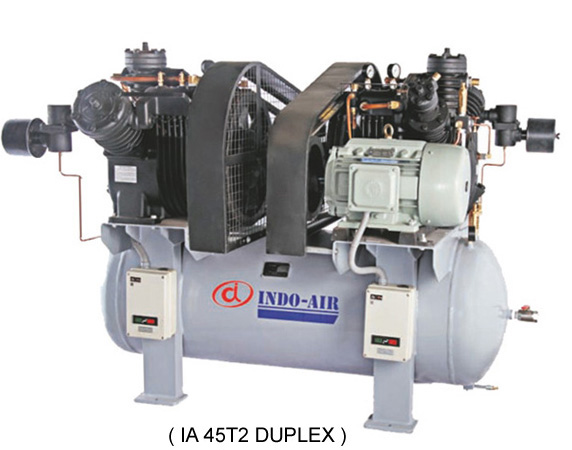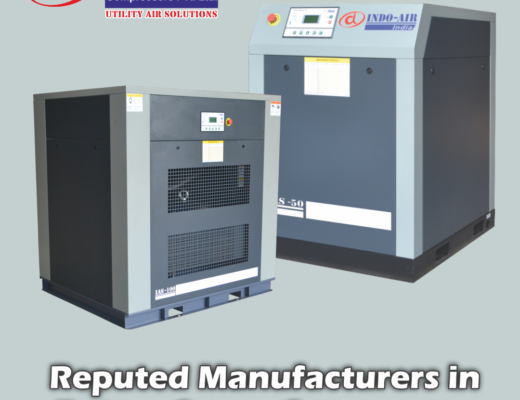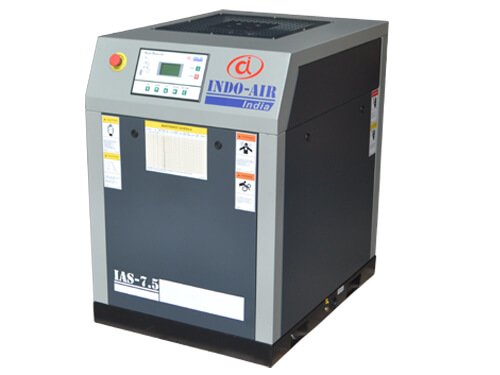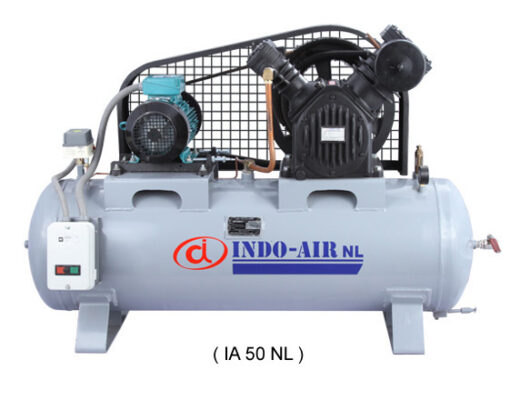Compressors are mechanical devices that pressurise the air using a motor. The motor may run at a constant pace or be switched on and off. The pressure in a compressed air system is what makes it work. The compressed air is then sent through a dryer to remove humidity before being supplied to the plant through pipes. Air compressor manufacturers in Ahmedabad make Industrial compressed air systems that deliver pressurised air to automated valves, diverters, sliding gates, dust collectors, instruments, and a variety of other devices around the facility. For industrial aerobic fermentation operations, air compressor systems are also necessary.
Compressed air systems require drying for many reasons and we will be discussing about each of them in brief below
Continuous presence of moisture
All ambient air includes some water vapour, which will condense into liquid water in a compressed air or gas system when the air or gas cools below the saturation point, or the point at which it can no longer store any more water vapour. The dew point is the temperature at which this happens. When estimating how much compressed air drying is required, the dew point becomes critical.
The growing usage of compressed air, as well as the development of numerous new and more complex equipment and controls throughout the years, has raised the need for clean, dry air. As a result, drying technology evolved, and dryers became common as well as important. CAGI’s Air Drying & Filtration Section is dedicated to educating users about this issue.
Moisture can cause extreme damages
Moisture in compressed air used in manufacturing plants creates difficulties with pneumatic systems, solenoid valves, and air motors, as well as affecting the production process or product. Moisture issues in compressed air lines were just accepted as unavoidable for many years. According to the air compressor manufacturers in India moisture can cause below damages
- As it wipes away lubrication, it causes corrosion and increased wear of moving components in industrial machinery.
- Paint sprayed using compressed air can have a negative impact on colour, adhesion, and finish.
- Process industries, where numerous processes rely on the effective operation of pneumatic controls, may be jeopardised. Due to corrosion, scale, and blocked orifices, these controls might fail, resulting in product damage or costly shutdowns.
- In cold conditions, control wires might freeze, resulting in incorrect control functioning.
- Corrosion of air or gas-operated equipment, erroneous readings, and interruption or shutdown of plant activities are all possible outcomes.
Increased performance efficiency and decrease operating cost
Clean, dry compressed air will save operating expenses in practically every process. Dirt, water, and oil entrained in the air will be deposited on the inner surfaces of pipes and fittings, producing a pressure drop in the line and a loss of efficiency. Liquid water speeds up corrosion and reduces equipment’s usable life, and corrosion particles can clog valves, fittings, and instrument control lines. Similar clogging will occur when water freezes in these components.
Saves a lot of downtime by protecting valves and cylinders
Sludge deposits created by unclean, moist, and greasy air act as a drag on pneumatic cylinders, requiring more frequent maintenance intervals for seals and bearings. The operation is hampered and finally shut off. Moisture dilutes the oil used in an air cylinder’s head and rod, corrodes the walls, and delays reaction. As a result, efficiency and productivity suffer.
Moisture may cause rubber diaphragms in valves to harden and burst if it flows through them. Spools and pistons can also become pitted as a result of moisture. A slow or blocked cylinder might cause significant downtime in high-speed manufacturing. Many of these issues may be avoided with a clean, dry air supply.




